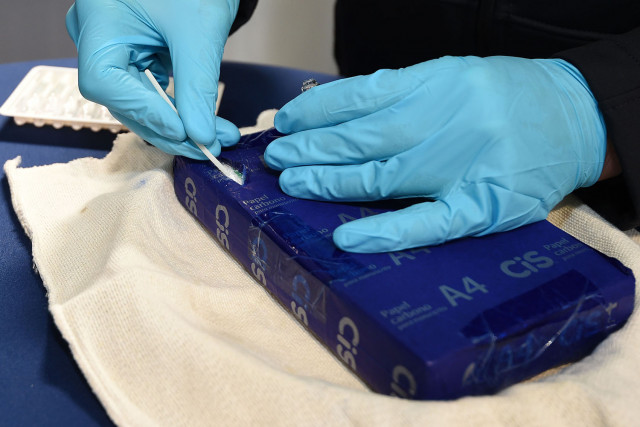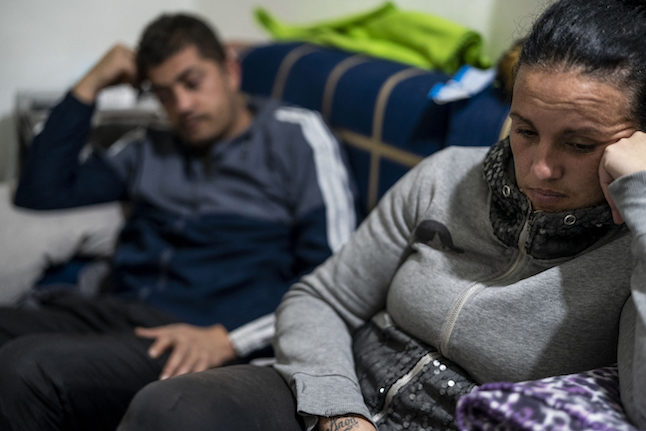Germany’s Bundeszollverwaltung – usually shortened to Zoll or Zollamt – is the federal authority tasked with keeping contraband out of the country. Whether it be illicit drugs, counterfeit medicines or exotic animals, the Zoll is Germany's last line of defence.
Their recently released 2018 statistics show that despite the ever more creative ways smugglers have tried to evade the authorities, by far the most comes in through the post.
The statistics showed that 91 percent of contraband found was in mail sent from abroad to Germany, particularly medicines and illicit drugs being sent from China. The drugs are frequently ordered from the so-called ‘dark web’ before being packaged and sent to Germany.
READ: Cocaine worth €25 million found in Aldi banana boxes in north Germany
The confiscated drugs include counterfeit medicines – particularly impotence drugs like Cialis and Viagra – as well as anabolic steroids.

Drugs seized by Zoll on display. Image: DPA
Illicit drugs, such as the synthetic opioid fentanyl, which is significantly stronger than morphine and has caused frequent overdoses in recent years, was also seized. In the United States more people die each year of fentanyl overdoses than from any other drug.
Throughout 2018, more than 19,000 random searches were conducted on incoming mail, uncovering 1.5 million illegally-imported tablets and pills of various drugs. Steroids were also commonly seen, with more than 117,000 seized – including 1,000 in the possession of one athlete.
A Zoll spokesperson said the seizures were necessary, particularly as people may be unaware of the risks associated with prescription drugs ordered online.
“It’s bad that for many a cheap, one-click product is still an alternative to a trusted prescription drug or drugstore medication”, Albrecht Vieth told DPA.
 Drugs seized by Zoll disguised as a ream of A4 paper. Image: DPA
Drugs seized by Zoll disguised as a ream of A4 paper. Image: DPA
Vieth said that while the mail was the main source of imported contraband, “that does not mean we neglect other areas”.
One method which has become increasingly common has been drugs brought in by ‘swallowers’ (schlucker). In total, 13 swallowers were identified in 2018, including a father and son from Guatemala who had swallowed almost 1.5 kilograms of cocaine between them.
The amount of cocaine seized in 2018 grew significantly from previous years, from 94.3 kilograms in 2017 to 139 kilograms.
Other methods included disguising drugs in imported chocolate and baseballs.
2018 also saw more than 21,000 violations of Germany’s Species Protection Act, including attempted smuggling of live fish and iguanas.
SEE ALSO: Man tries to smuggle tortoises disguised as desserts through Berlin airport
p.p1 {margin: 0.0px 0.0px 0.0px 0.0px; font: 12.0px Helvetica}
p.p2 {margin: 0.0px 0.0px 0.0px 0.0px; font: 12.0px Helvetica; min-height: 14.0px}
p.p3 {margin: 0.0px 0.0px 0.0px 0.0px; line-height: 14.0px; font: 12.0px Times; color: #042eee; -webkit-text-stroke: #042eee}
span.s1 {text-decoration: underline ; font-kerning: none}



 Please whitelist us to continue reading.
Please whitelist us to continue reading.
Member comments